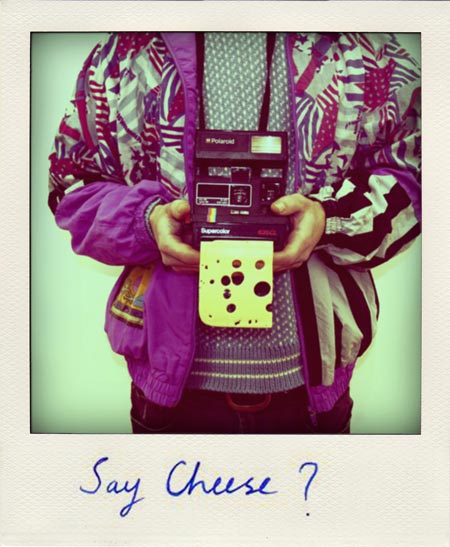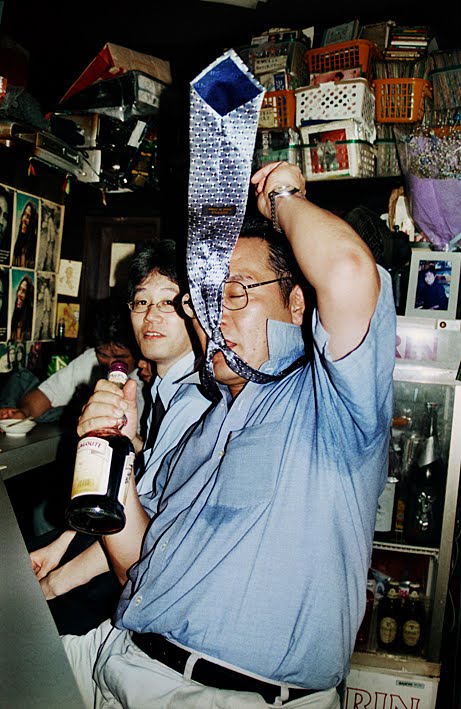 I have just received a couple of emails from students at Falmouth University in the UK. Instead of the usual print auction to fundraise for their end of year show they have come up with something a little different: they are producing a cookbook with recipes by a pretty solid selection of contemporary photographers (Alec Soth, Elina Brotherus, Richard Misrach, Martin Parr, etc.). I think this is kind of great and proof that the future of photobooks although uncertain, is definitely not getting any less surprising. Find out more (and buy yourself a copy) here.
I have just received a couple of emails from students at Falmouth University in the UK. Instead of the usual print auction to fundraise for their end of year show they have come up with something a little different: they are producing a cookbook with recipes by a pretty solid selection of contemporary photographers (Alec Soth, Elina Brotherus, Richard Misrach, Martin Parr, etc.). I think this is kind of great and proof that the future of photobooks although uncertain, is definitely not getting any less surprising. Find out more (and buy yourself a copy) here.
A bad father... and a Japanese giveaway
I have just realised that eyecurious turned 1... about 3 weeks ago. I have never been good at remembering birthdays (thank you Facebook for stepping in to fill that breach), but to forget your own offspring's birthday is a little unforgiveable. I thought I would use this momentous occasion to ask you readers if there is anything you would like more or less of on eyecurious. More book or exhibition reviews? Less random musings on the state/future of photography? More info on lesser known photographers? Please put your ideas in the comments... all suggestions are welcome! I will be picking one commenter at random to give away a little package of Japanese photographic goodness. This won't be anything too fancy but it will include a few publications on different photographers. I will pick a winner on Monday 26th April (please provide your email address when commenting so I can get in touch).
Review: Leo Rubinfien, A Map of the East
I should say this up front: this is not so much a review as a eulogy. It has been a long time since a photobook has had such an strong impact on me (to the point where I found myself poring over it at 3am during a bout of insomnia). I am not going to pretend to be impartial here: as a westerner who is interested/obsessed with Japan and East Asia, this was always likely to resonate with me. Instead, I'm just going to try and put into words the reasons why I think it is so great. To paraphrase the brilliant Kingsley Amis, "Why did I like women's breasts [this book] so much? I was clear on why I liked them [it], thanks, but why did I like them [it] so much?"
I first came across Leo Rubinfien through the text he wrote for Shomei Tomatsu's catalogue, Skin of the Nation (another photobook deserving of a eulogy of its own), but, embarrassingly, I didn't realise at the time that he was an accomplished photographer in his own right. It wasn't until last year that I came across Rubinfien again, when Naoya Hatakeyama introduced me to this book. Unfortunately, this was after a few beers and although I was intrigued at the time, the drinks got the better of my memory... until the book resurfaced a couple of weeks ago at the excellent Comptoir de l'Image bookstore. You can see an image of this tiny store here, which will give you a bit of an idea of why I consider it to be nothing short of miraculous that I found this book buried in one of the floor-to-waist piles of books that line this tiny store... like stumbling upon a needle in a haystack.
The book opens with an image from a busy street in Tokyo, where Rubinfien spent his early childhood. The bemused, vaguely unimpressed salaryman staring into the camera is the perfect introduction: his look of incomprehension says "What are you looking at? Why are you taking this picture?" This image conveys both our fascination with 'Asia' as well as a sense that Asia is gently shaking it's head at the strange behaviour of the overly curious foreigner.
The book bounces all around East Asia – Japan, China, Indonesia, Thailand, Vietnam, with a couple of glimpses of South Asia along the way – in no discernible order. Importantly the captions situating the images are all located at the end of the book: by doing this Rubinfien avoids us thinking about the specific location of each image in order to bring the abstract notion of 'Asia' into being.
How can you possibly define something as massive and diverse as Asia? You will rarely hear a European refer to themselves as such (or maybe only in certain corners of Brussels) and I'm always slightly amused when I hear someone say "I'm going to Europe." It seems like a total non-sense: how can you go to a place that vast with so many fragmented and opposing identities and cultures? And yet I'm sure that to an American or an Australian, the idea of Europe is more coherent and evokes certain notions which aren't necessarily reductive stereotypes like baguettes and shrugs, pasta and wild gesticulation or beer and extreme organization.
The real success of this book for me is that Rubinfien manages to bring this concept of Asia to life with a few handfuls of images (one hundred and seven to be precise). Yes, this is most probably an Asia that Asians themselves wouldn't identify with, but this is not an idealisation of the pure exoticism of the East either. This isn't a book of geishas, buddhist monks or minimalist 'zen' landscapes. This is the Asia of smells and sounds, of tangled wires, hotel lobbies and heavy skies. Rubinfien knows that he is an "alien", a foreigner, and it is through those eyes that he draws out his map. It is a book of an incredibly astute and observant outsider's experience of Asia... of the feeling that it evokes. He accepts that he cannot capture Asia's essence and so he chooses to capture perfectly the experience of searching for it.
Both Rubinfien's introduction and Donald Richie's afterword are brilliant... I probably would have been better off just quoting them at length here. In his review, Jeff Ladd described the printing as 'chalky', but I actually like the muted effect that it has on the images, and I agree with him about the intelligence with which the images have been edited. The only thing I don't love about this book (I had to find something) is it's cover, which seems a little too obvious given the subtlety of the images on the inside. Mercifully, although it is almost twenty years old, this book doesn't cost $200, but more like $20 (for the hardback version, the paperback is probably even cheaper). If you have any interest in Asia and in photography, you should own this.
Leo Rubinfien, A Map of the East. David R Godine, (Hardcover, 132 pages, 107 colour plates, 1992).
Rating: (Extra-)Highly Recommended
Goro Bertz: pissing in the back streets of Shinjuku
 When I was in Stockholm for the opening of Tokyo Stories, Maria from the Kulturhuset spoke to me about a young photographer who is half-Swedish and half-Japanese, Goro Bertz. Bertz doesn't have a functional website that I could find, but I did manage to track down some of his images on a few Swedish blogs. Perhaps it's wrong to suggest that Bertz is half-Swedish, half-Japanese. The reason I mention this is because he is clearly influenced by Japanese photography and shoots on the sacred street photography terrain that is Shinjuku, but, although his mother is Japanese he was born and raised in Sweden and is coming to this photography from the perspective of an outsider. What I found particularly interesting in his work is how it seems influenced both by Christer Strömholm and Anders Petersen as well as by Japanese photographers, most obviously Daido Moriyama. He juggles with colour, black-and-white and with different styles, and wears his influences on his sleeve, but I found that he manages to weave these pretty diverse elements into a very coherent whole that feels quite personal and sincere. There is an interesting online exhibition including a long text by Bertz (in English) which gives a good sense of his approach as well as a short slideshow complete with dramatic narration (in Swedish) which are worth a look to see more of his work. Definitely one to watch.
When I was in Stockholm for the opening of Tokyo Stories, Maria from the Kulturhuset spoke to me about a young photographer who is half-Swedish and half-Japanese, Goro Bertz. Bertz doesn't have a functional website that I could find, but I did manage to track down some of his images on a few Swedish blogs. Perhaps it's wrong to suggest that Bertz is half-Swedish, half-Japanese. The reason I mention this is because he is clearly influenced by Japanese photography and shoots on the sacred street photography terrain that is Shinjuku, but, although his mother is Japanese he was born and raised in Sweden and is coming to this photography from the perspective of an outsider. What I found particularly interesting in his work is how it seems influenced both by Christer Strömholm and Anders Petersen as well as by Japanese photographers, most obviously Daido Moriyama. He juggles with colour, black-and-white and with different styles, and wears his influences on his sleeve, but I found that he manages to weave these pretty diverse elements into a very coherent whole that feels quite personal and sincere. There is an interesting online exhibition including a long text by Bertz (in English) which gives a good sense of his approach as well as a short slideshow complete with dramatic narration (in Swedish) which are worth a look to see more of his work. Definitely one to watch.
Photobook swap
I have decided to attempt a photobook swap over on eyecurious books etc. I have a few books (mainly Japanese photobooks) in duplicate and I feel that it's only fair to find them a new home. I've already posted a few of the books that I have available for exchange and there will be more to come in the next few days. If you see anything that interests you and have something to swap, then get in touch.





